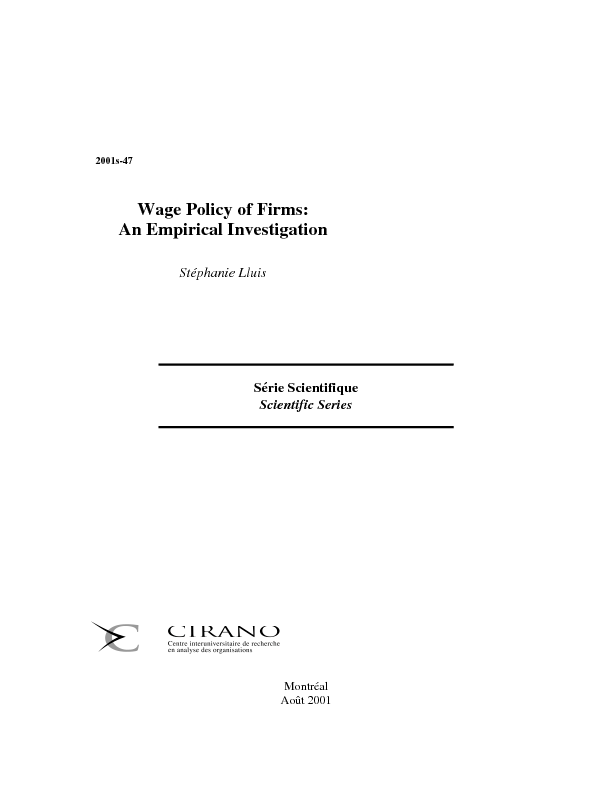Wage Policy of Firms: An Empirical Investigation
This paper analyzes the dynamics of wages and workers' mobility within firms with a hierarchical structure of job levels. The theoretical model proposed by Gibbons and Waldman (1999), that combines the notions of human capital accumulation, job rank assignments based on comparative advantage and learning about workers' abilities, is implemented empirically to measure the importance of these elements in explaining the wage policy of firms. Survey data from the GSOEP (German Socio-Economic Panel) are used to draw conclusions on the common features characterizing the wage policy of firms from a large sample of firms. The GSOEP survey also provides information on the worker's rank within his firm which is usually not available in other surveys. The results are consistent with non-random selection of workers onto the rungs of a job ladder. There is no direct evidence of learning about workers' unobserved abilities but the analysis reveals that unmeasured ability is an important factor driving wage dynamics. Finally, job rank effects remain significant even after controlling for measured and unmeasured characteristics.
[ - ]




